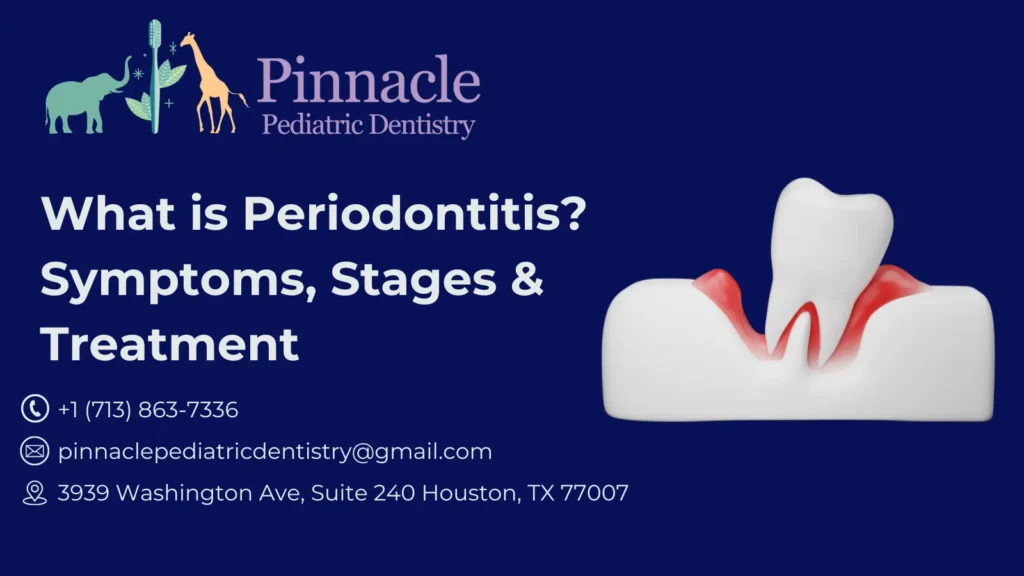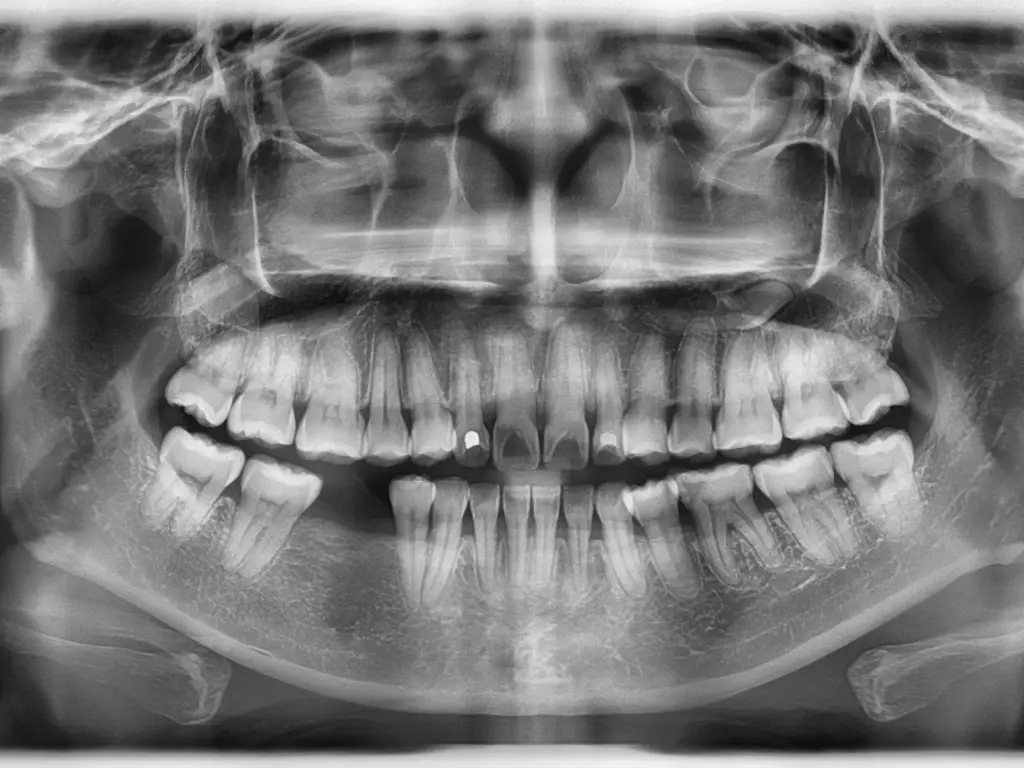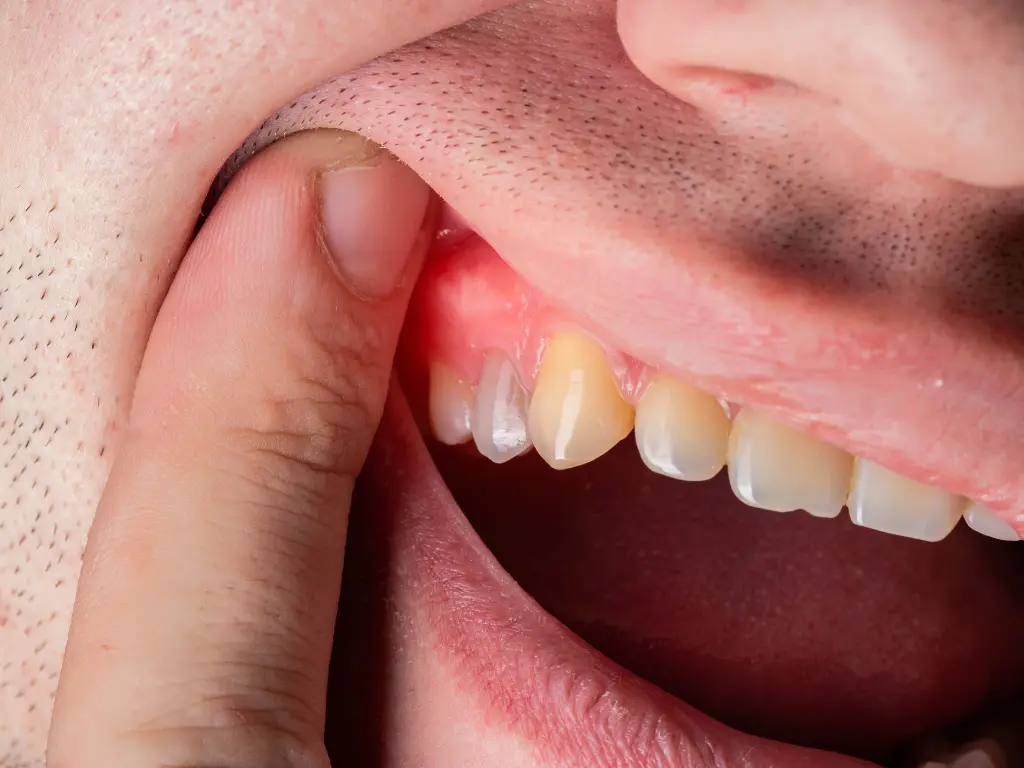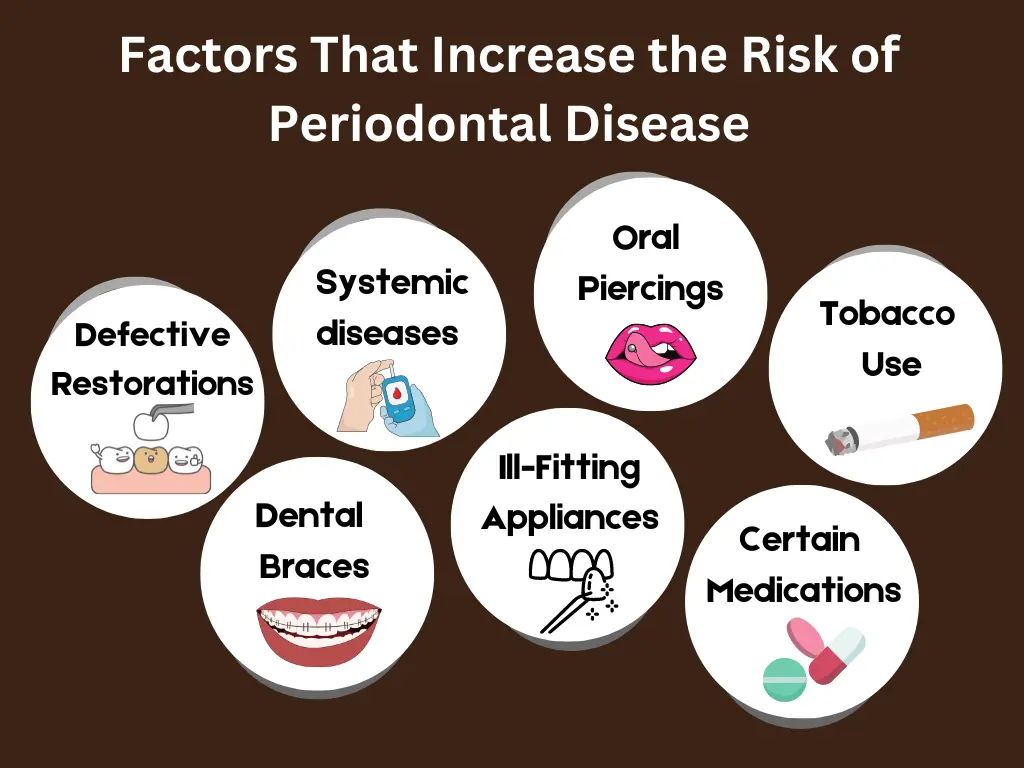What is Periodontitis? Symptoms, Stages & Treatment

Periodontitis is the serious and advanced stage of gingival (gum disease), which includes bone loss. It is irreversible, but can be treated.
The gingival tissue and bone that surround and support the teeth could become seriously damaged and the teeth affected could become loose and fall out.
When Periodontitis Occurs?
Periodontitis occurs when the early stage of periodontal disease, gingivitis, is left untreated. This condition is uncommon in childhood but can increase during adolescence.
Plaque and calculus “tartar” accumulate at the base of the teeth. Inflammation causes a pocket to develop between the gingiva and teeth. In return, this area fills with plaque and calculus.

Soft tissue inflammation or swelling traps the debris in the pocket. Continued inflammation eventually causes the destruction of the tissues and bone surrounding the tooth. Because both plaque and calculus contain bacteria, infection is likely.
Signs and Symptoms of Periodontitis
1. Breath Odor.
2. Gums that bleed easily.
3. Gums that appear bright red or red-purple.
4. Swollen gums.
5. Gums that appear shiny.
6. Loose teeth.
7. Gums that are tender when touched, but otherwise painless.
Note: It is important to note that early symptoms of periodontal disease may resemble gingivitis.
Diagnosis of Periodontitis
Dental radiographs reveal the loss of supporting bone and may also show the presence of calculus (tartar) deposits under the gingiva. The dentist will confirm the diagnosis by a thorough periodontal examination, via periodontal probing.

Treatment of Periodontitis
The goal of periodontal disease treatment is to reduce inflammation, eliminate pockets (if present), make the area maintainable to the patient and address any underlying causes of the disease. Rough surfaces of teeth and/or dental appliances should be repaired. General illness or other conditions (i.e. diabetes) should be treated.
It is important to have the teeth cleaned thoroughly. This may involve use of various instruments or devices to loosen and remove deposits from the teeth (scaling and/or root planning).
Meticulous home oral hygiene is necessary after professional tooth cleaning to limit further destruction. The dentist or hygienist will demonstrate proper brushing and flossing techniques. It is often recommended that patients with periodontitis have professional tooth cleanings more frequently than twice a year.
Prognosis (Outlook)
Some people find the removal of dental plaque from inflamed gums to be uncomfortable. Bleeding and tenderness of the gums should go away within 1 or 2 weeks of treatment. It is important to note that healthy gums are pink and firm in appearance.
Possible Complications of Untreated Periodontitis
Understanding the potential risks is crucial when it comes to managing periodontitis. Here, we delve into the possible complications that can arise from untreated periodontal disease:
1. Infection or abscess of the soft tissue.
2. Infection of the jaw bones.
3. Reoccurence of the disease.
4. Tooth abscess.
5. Loosening of the tooth.
7. Tooth flaring/shifting.

Prevention to Avoid Periodontitis
Good oral hygiene is the best means of prevention. This includes thorough tooth brushing and flossing, and regular professional dental cleanings. The prevention and treatment of gingivitis reduces the risk of development of periodontitis.
If you notice any of the following symptoms, please bring your child in for an evaluation:
1. Gums that bleed easily.
2. Swollen or tender gums.
3. Pus around your child’s teeth and gums.
4. Permanent teeth that become loose or that have shifted.
5. Persistent bad breath or bad taste.
6. Pain of the gingival tissues.
7. Red ulcers or lesions on the gums, tongue or palate.
Factors That Increase the Risk of Periodontal Disease
Let’s explore some simple factors that could make gum disease more likely to happen:

1. Tobacco use (smoking or chewing).
2. Systemic diseases such as diabetes.
3. Certain medications, such as steroids, anti-seizure medications, cancer therapy drugs, calcium channel blockers (medications used to treat hypertension), and oral contraceptives.
4. Oral piercings.
5. Ill-fitting appliances.
6. Braces.
7. Defective restorations (fillings or crowns).
If you are concerned that your child may have periodontal disease, please make an appointment with Pinnacle Pediatric Dentistry, so that your child can be evaluated.
Proper oral home care is essential in preventing periodontal disease. Assist your children in brushing and flossing and promote healthy eating habits.
